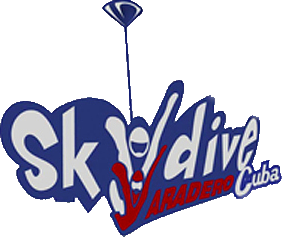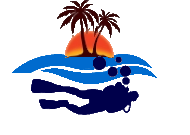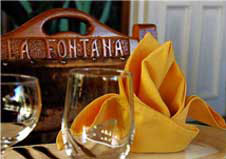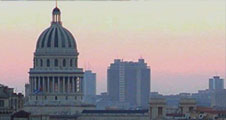The Alicia Alonso we don’t know…
By: Alexis Schalchter | Source: www.jrebelde.cubaweb.cu ![]() 29 de August 2009
29 de August 2009
Alicia Alonso: a legendary Cuban dancer, founder and creator of Cuban Ballet Company, choreographer of classic and modern ballet dances... is admired by different audiences everywhere around the world. She also is a science fiction lover, researcher of Cuban caverns, discoverer of a rare mushroom, and a great connoisseur of astronomy.
—It is time we all know the Alicia Alonso interested in science matters... Don’t you think?
—It might be useful for you to fully understand some of my ballet dances. One of them is the ballet inspired in the musical work Verbum, (or Genome in music) by Catalan Joan Guinjoan, adapted and choreographed by myself. It is about the evolution of the human genome and its mysteries. If I had not been so interested in that magnificent world surrounding us, which is deeply researched by science, I would have missed the creation of such a complex ballet..
—Verbal was premiered Oct. 29, 2004 during the 19th International Ballet Festival in Havana.
—The program of that ballet reads something I expressed back then, in my opinion very important if it comes to understand my interest in such an apparently distant matter with my artistic world: «Science and art are among the highest expressions of human activity. In some way they are linked and that’s why I see between the audacity of scientific research and the unstoppable adventure of artistic creation, mysterious communicating ties».
—Many years before Verbum, Garcia Lorca Hall in the Grand Theater of Havana presented for the first time the ballet Génesis on May 21, 1978, choreographed by you, music by Luigi Nono and stage design by Jesus Soto. Theme: the small physical world in which life takes place at first...
—Since I was a child I founded really interested issues related with the micro and macro-world and the relations between both. There is a beautiful and fascinating combination between art and what has been discovered by science. Science fiction can bear witness of that reality...
—This is the perfect time to talk about Misión Korad, a ballet created and first danced by you in 1980, after you knew and got impressed with a Cuban work of science-fiction.
—I have always been a lover of the science fiction. I think in some way science is in our days, the equivalent of fairy tales in ancient times. Science fiction, as fairy tales, is a product of imagination, in a constant trip to the unknown, to the still unknown world science has not been able to reach yet. The human being, making good use of accumulated experiences, gives free reign to imagination and tells his\her own version of mystery. This is why I motivated when I knew the book by Oscar Hurtado, entitled La ciudad muerta de Korad, the first science-fiction poem in our literature. Something that called my attention was the fact that one character of that book, presented as a hero, is a Cuban cosmonaut, in times in which it would mean delirious fantasy. Therefore, when it did take place, the first flight into the space of Cuban Arnaldo Tamayo, I decided to create a ballet inspired in that scientific event. It was like linking the dream of a poet to a reality developed by science...
—Martí wrote with concrete examples one thesis about poets like the prophets of science...
—Interesting! ... He was not wrong, as it is the poem that inspired me to make Misión Korad ballet.
—Do you have any other ballet based on science-fiction? On April 18, 2002 you staged something inspired in a lighthearted play created in 1750 by Carlo Goldoni.
—It is impossible to forget "Un viaje a la Luna", comedy-ballet in one act, music by Giuseppe Verdi, libretto in Cuban version by José Ramón Neyra, designed by Ricardo Reymena and choreographed by me. I love the theme, same way I love astronomy in particular, science in which Goldoni based to create this ballet. In such remote times, somebody had already planned human presence on the moon…
—What interests you about astronomy?
—The mysteries it shrouds. Black holes for instance; life outside our planet...
—During a recent trip to Greece in 2009, you discussed with a journalist who affirmed there is no life outside The Earth...
—That’s right. I argued with her because I firmly think science has proved there is live out there. One day we will know what’s out there, after the so-called black holes. Whether it is true or no... Will they be the path towards an unknown universe? Isn’t it fascinating! ...
—That theory exposed by the famous British Physic Stephen Hawking is really amazing. But it is even more amazing to see a ballet dancer interested in science matters... Who encouraged you to go through such a distant matter from dancing?
—The point is that there is something you don’t know about me. My profession is pretty much linked to science, in particular linked to a scientist: my father, a veterinarian-surgeon: Antonio Martínez Arredondo. In 1929, the Army decided to improve horse raising and so they sent one of the most outstanding experts to Spain, to select new breeds and new horses, maintaining them save and sound during the trip back to Cuba. The whole family went there, where we lived for one year. My maternal grandfather, a Spanish man from Santander, asked my sister Blanca and me, to be back knowing how to dance the folkloric dances of his country, as a present for him. We both did, we were taught how to dance those dances and one day we came back to Cuba, dancing "malagueñas", "sevillanas", "jotas" dances and playing castanets. Those were the first dance classes I had, which helped me a lot in the creation of Spanish characters that I later interpreted, like "Carmen", "La Molinera" in "El sombrero de tres picos" and "La Quiteria de Don Quijote", among others. This is how the scientific knowledge of my father laid the foundations for my first dance experiences. My father, as a veterinarian, was regularly asked to offer masterly classes, and he was thought to be the first Cuban professional to use artificial insemination. Pinar del Rio Veterinarian Scientific Council invited me this year to take part in an activity related to my father’s work, to which I could not attend, but I sent them this note: «I have gladly received the news that Cuban veterinarians are interested in rescuing and studying the personality of my father, Dr. in Veterinarian Medicine Antonio Martínez Arredondo. I’m deeply grateful for this gesture, he would humbly receive. He was an exceptional man, who taught me to love nature, especially animals, but mainly to love our country».
—When you were younger, a renown dancer already, you joined speleologist groups and so you knew some Cuban caverns. An experience that is collected in a series of pictures, even one picture by the side of the renown Cuban geographer Antonio Núñez Jiménez, among others. Why did you keep your interest in science matters?
—I followed the steps of my partner at that time, Fernando Alonso, who practiced speleology. I founded very interesting that silent world in shroud mysteries about the place in which we live. I consider myself a person open for knowledge, you can call it artistic or scientific culture. You missed one piece of information, I was not the only one dancer interested in speleology. Lupe Velis, who later became the wife of Núñez Jiménez, also was of one of us.
—I quote a text of Núñez Jiménez expressing some amazing words about you: «I remember that during the excursions of the German expedition, sponsored by Francfort del Meno University in Sierra de los Órganos, and to the dismay of botanist Wilhelm Lotcher, Alicia discovered a new species of mushroom, near the entrance of Cueva del Indio, in San Vicente, Viñales Valley». Could you speak about it a little bit more?
—It all happened in silent and suddenly. During one of the excursions I sat to rest at the entrance of the cave and when I looked down I found a beautiful mushroom next to my feet. Its colorful texture called my attention and then I commented it with professor Lotcher. The German scientist was jumping for joy! I had found a mushroom, still unknown by them to that moment. Núñez Jiménez witnessed the happening and so he wrote the text you quoted. Another important detail, known by just a few, is that during my friendship relation with that great geographer and friend: I like a dancer participated in research excursions with Núñez, he for some time was the representative of Cuban Ballet abroad, before he went to fight to Sierra Maestra, I could then say this a linking point between Cuban ballet and speleological science.
—There is still more to see about art, science and Alicia Alonso. On January15, 1960, Commander in Chief Fidel Castro participated in the act to mark the 20th anniversary of Cuban Speleological Society, directed by Núñez Jiménez, you were one of the special guests there.
—That’s right. I will never forget that date would later be the Day of Science in our country. An important part of the speech pronounced by Fidel at that moment: the future of our country must be a future of man of sciences.
—Once more the famous Cuban dancer was present in a science event...
—If you want... that’s the other Alicia Alonso... the one that respects and admires scientific knowledge.
Translation: Gladys Deus Braña. (Cubarte)























